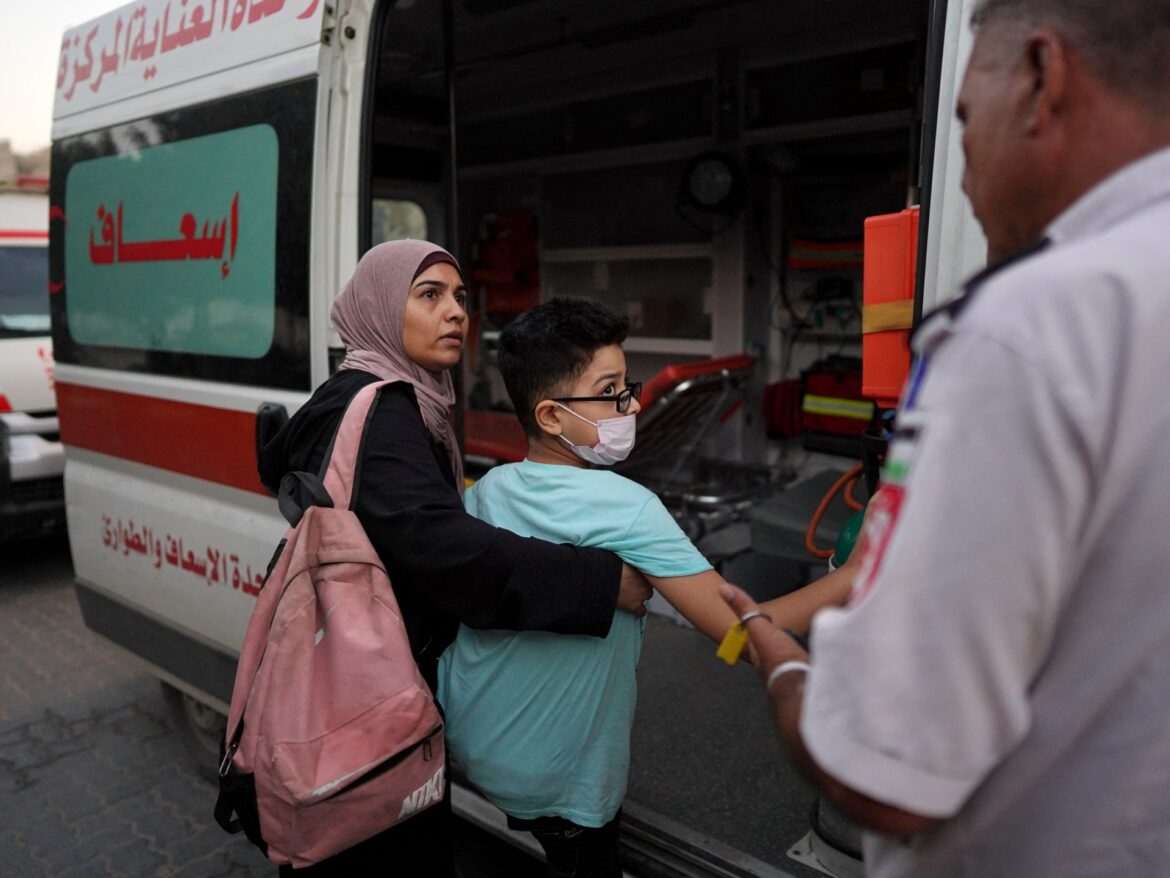After more than a decade of relentless bombing of the Gaza Strip that has killed more than 40,000 Palestinians, the leaders of Israel and the Palestinian group Hamas were invited by mediators to a new round of talks on Thursday.
The talks were held in part to prevent an escalation of hostilities between Iran and Israel following the assassination of Hamas leader Ismail Haniyeh in Tehran on July 31. Here’s everything we know about the negotiations:
When and where will the ceasefire talks take place?
The talks are expected to take place in Doha, Qatar, on Thursday.
On August 9, the U.S. Embassy in Israel issued a joint statement by U.S. President Joe Biden, Egyptian President Abdel Fattah el-Sisi, and Qatari Emir Sheikh Tamim bin Hamad Al Thani. The statement set a date for the talks and specified that they would be held in Cairo or Doha.
Who will be there?
Mediators from Qatar, Egypt and the United States are expected. All three countries have been brokering ceasefire negotiations since November, a month after the war began.
Israel will participate in the Doha talks. Its delegation will include intelligence chief David Barnea, internal security chief Ronen Bar and army hostage chief Nitzan Alon, defense officials confirmed Wednesday.
The information available so far suggests that Hamas will not send representatives.
“The use of new negotiations allows the occupation to impose new conditions and use the labyrinth of negotiations to carry out more massacres,” Sami Abu Zuhri, a senior Hamas official, told Reuters news agency on Wednesday.
NPR also reported that Hamas spokesman Suhail al-Hindi said Hamas would not participate in the negotiations. The BBC quoted a senior Hamas official as confirming that the group would not participate in the negotiations.
The AFP news agency, citing a US source, said CIA Director William Burns would attend the meeting.
What will we be talking about?
According to the joint statement, the talks will aim to “conclude the ceasefire” and reach an agreement to release Israeli prisoners held in the Gaza Strip. Some 110 prisoners are still believed to be in Gaza out of the 240 captured in southern Israel on October 7.
Representatives of the three mediating countries added in the statement that they would discuss a framework agreement on which they have been working jointly for months.
This plan will be based on a ceasefire plan proposed by Biden on May 31. This proposal formed the basis of UN Security Council Resolution 2735, which was adopted on June 10, with 14 member states voting in favor, none against, and only Russia abstaining.
The resolution provided for a three-phase approach to achieving a truce in the region. The first phase would consist of the release of Israeli captives and Palestinian prisoners over a six-week period; the second phase would consist of a definitive cessation of hostilities; and the third phase would consist of a multi-year plan for the reconstruction of Gaza.
“There is no more time to lose and no excuses to further delay hostilities. It is time to release the hostages, begin the ceasefire and implement this agreement,” the statement read.
What is the Israeli position?
Israeli Prime Minister Benjamin Netanyahu has repeatedly reiterated Israel’s commitment to a “complete victory” over Hamas in the war.
Israel has also said it wants its military to retain control of Gaza’s southern border with Egypt.
Israel is also insisting on establishing checkpoints through which Palestinians returning to their homes in northern Gaza would have to pass and where they would be subject to security checks for weapons.
What is Hamas’ position?
On August 11, Hamas posted a message on its Telegram channel indicating that it wanted a truce based strictly on Biden’s proposal and the June 10 UN Security Council resolution rather than on any new plan that might be proposed during the talks.
In the same message, Hamas said it wanted a plan “based on the May 31 ceasefire proposal presented by US President Joe Biden, the framework outlined by mediators Qatar and Egypt on May 6, and UN Security Council Resolution 2735.”
The May 6 proposal mentioned in the message calls for the release of Israeli prisoners in Gaza in exchange for an unspecified number of Palestinian prisoners. Hamas accepted the proposal at the time, while Israel rejected it.
On Thursday, Hamas told mediators that if Israel made a “serious” proposal consistent with Hamas’s previous proposals, the group would continue to engage in negotiations.
Hamas also demands a complete withdrawal of Israeli troops from Gaza.
Why are these discussions taking place now?
In addition to the growing number of civilian casualties and the prospect of famine in Gaza, recent events have made the situation worse.
On July 31, Hamas leader Ismail Haniyeh was assassinated in Iran, raising fears of a wider regional conflict between Israel and Iran.
A commander of the Lebanese group Hezbollah, Fuad Shukr, was also killed in Beirut, Lebanon, in an Israeli airstrike.



